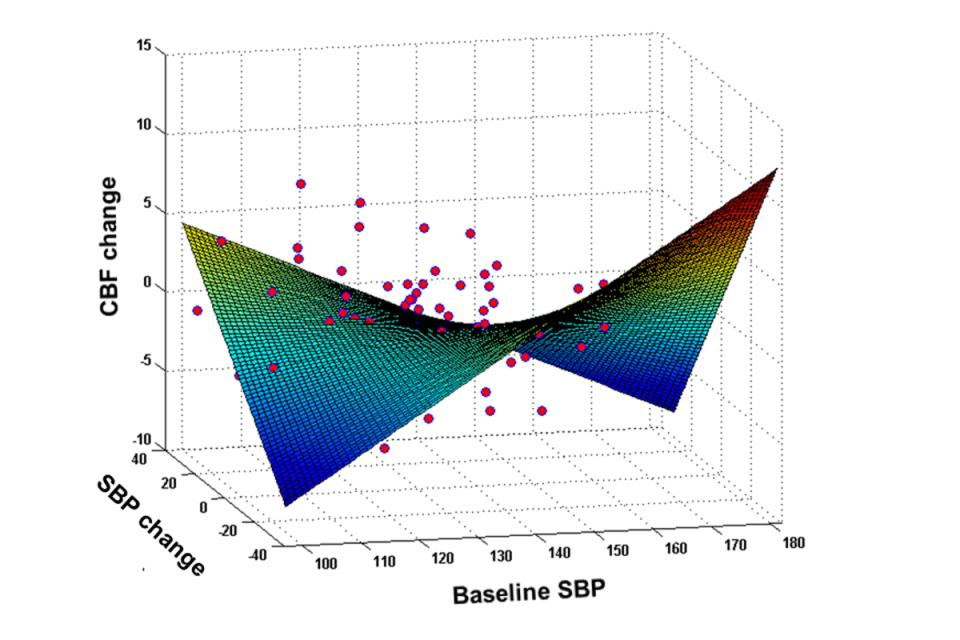Awards or Grants: (R01) National Institutes of Health (NIH)
Hypertension (HTN) is associated with impaired cerebral vasoreactivity (VR) and flow autoregulation, which may result in greater dependence of cerebral blood flow (CBF) on perfusion pressure. Verifying this hypothesis has important implications for targeting blood pressure (BP) to ensure adequate perfusion in subjects with HTN. In this project we used novel magnetic resonance imaging (MRI) techniques to systematically examine relationships between BP, cerebral vasoreactivity, CBF, and cognitive performance in hypertensive subjects. The Glodzik lab has found that there is an optimum BP that maximizes the probability of brain preservation.
Full Caption: The results of 3D-surface fitting depicting the relationship between baseline systolic blood pressure (SBP), change in SBP (slope: mmHg/ year), and change in cortical cerebral blood flow (CBF) (slope: ml/100g/min/ year). The graph shows a positive correlation of SBP and CBF slopes (increased CBF with increased SBP) at low baseline SBP and a negative correlation of SBP and CBF slopes (increased CBF with decreased SBP) at high baseline SBP.


